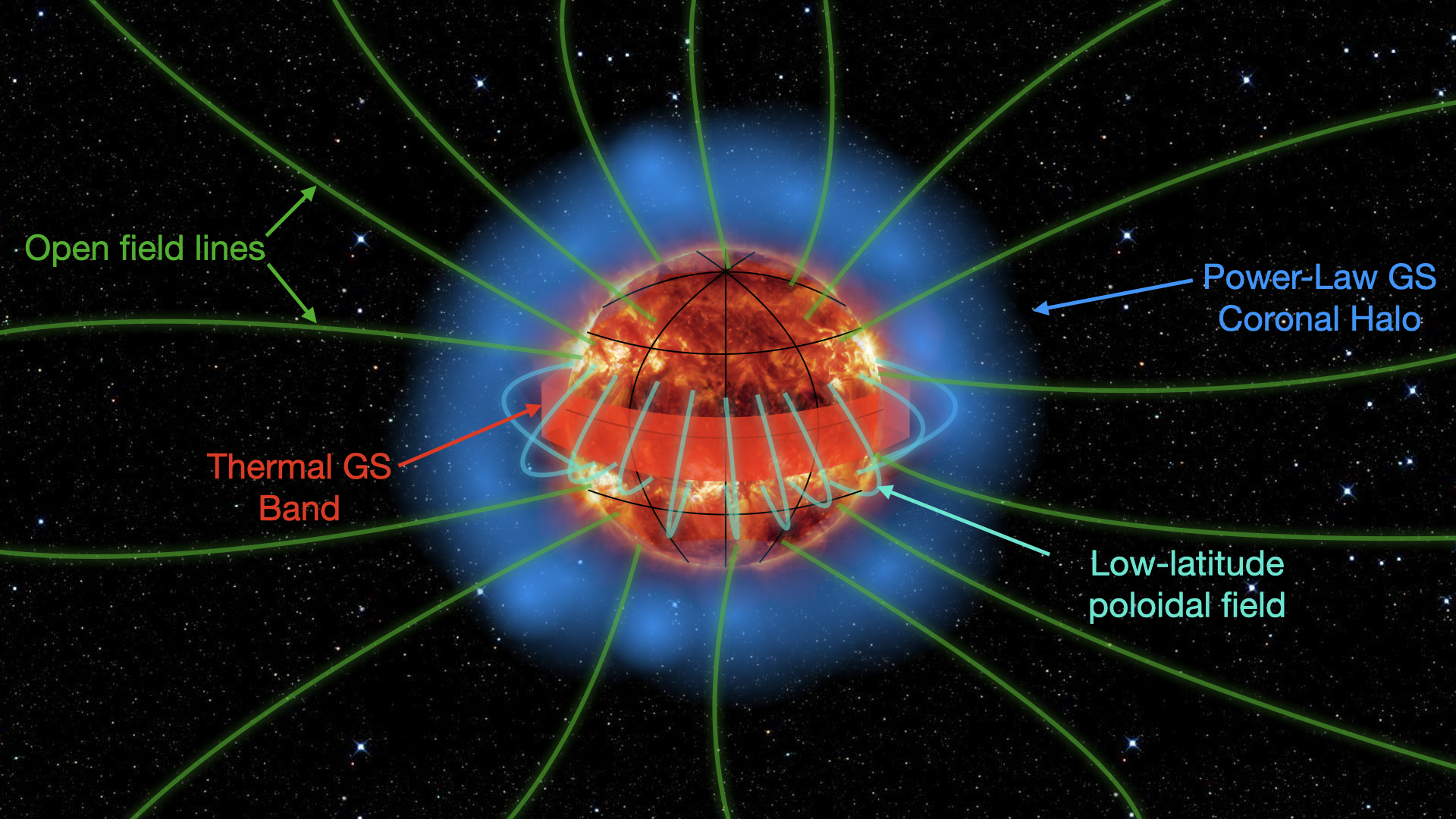Radio Stars
Published:
The Sun is a giant soup of ionized gas that is constantly rotating and churning. This motion moves charged particles like electrons around, generating magnetic fields that sometimes get twisted and tangled. When these magnetic field lines get tangled, they snap and reconnect, dumping energy into the Sun’s atmosphere (called the corona). This effect, among others, may be responsible for heating the corona to very high temperatures (millions of degrees Kelvin) while the surface of the Sun is much cooler (thousands of degrees Kelvin). This is called the coronal heating problem, and it is one of the most important unsolved problems in solar physics. It may also be responsible for causing solar flares and coronal mass ejections such as this one. These events can cause aurorae on Earth and can damage satellites and power grids in extreme cases. One such case was the Carrington Event in 1859, which caused telegraph systems to fail and was the most extreme solar storm in recorded history.
Others stars also likely have a corona and probably experience similar events. From our own experience with the Sun, we know that these events can be very energetic and impact our life on Earth. This means that understanding how other types of stars behave is critical for determining the possibility of life on any exoplanets that may be orbiting them. This is where radio observations become important. Radio emission can trace strong magnetic fields and high temperature plasma, which are both present in the corona. Observing stellar radio emission, if present, can help us understand the processes that govern their activity. In particular, we can study how the radio emission changes with time, frequency, and position to understand the responsible mechanisms.
In my research, I am interested in observing and modeling the radio emission from stars. There are a number of different mechanisms that can produce radio emission, and I am working to explain the observed properties of different stars. I use techniques like spectroscopy and astrometry to compare different models to the observations. I hope to use my findings in the search for natural radio emission from exoplanets, which could be used to determine if they have magnetic fields and atmospheres.

